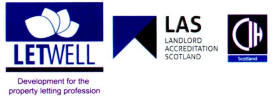2022 saw the highest proportion of property sales to investors since 2016, with landlords accounting for 12.2% of the sales that year and 19% of the overall UK housing stock. Surprised? Well, it’s not so unbelievable when you look at what’s happening.
- Interest rates have dropped since their spike after Liz Truss’s disastrous mini-budget, with buy-to-let mortgages now available from 3.59%.
- House prices have levelled off, giving landlords a much better shot at getting a great deal with an instantly higher yield.
- Rents have risen sharply because of intense competition among tenants.
Many existing landlords are taking the opportunity to expand their portfolios again, and if you’re reading this blog, you could be thinking that 2023 is the year you begin your buy-to-let journey. But where do you start?
Well, there’s plenty to learn, from raising the finance to having the right people around you, avoiding classic mistakes and picking the perfect rental property. But don’t worry, we’re sharing everything you need right here to help you build a portfolio of your first five rental properties, and beyond!
SET YOUR GOALS AND MAKE A PLAN
Building a successful buy-to-let portfolio isn’t a get-rich-quick scheme, but it is a reliable way to build personal and generational wealth (as a look at any rich list will tell you).
To start and stay on track, it’s essential to have a vision that pulls you forward, whether it’s early retirement, financial security for your family, or beach front house with your dream car parked outside. Here are some tips to start you off:
- Write a 1, 5, 10 and 20-year plan for short, medium and long-term goals, with a reward for meeting each one. Hang it where you can see it every day or save it as the wallpaper on your phone. Get a vision board.
- Fast-track your learning by reading books from successful property investors like Rich Dad, Poor Dad by Robert Kiyosaki, Property Magic by Simon Zutshi and How to create wealth by investing in Real Estate by Grant Cardone.
- Prioritise your buy-to-let business – if you wait a year for that luxury holiday or new car and buy a rental property instead, you’ll get a lasting sense of accomplishment that beats short-term gratification any day.
As with any new business, some things won’t necessarily go to plan, so clearly displaying your goals will help you deal with any bumps in the road and keep your vision alive.
GET WISE TO MONEY
There’s no escaping the fact that you’ll need money to buy your first rental property, but cash flow is also critical to the success of any business. Try these tips for getting started and staying solvent:
- If you own your home, or have savings or other investments, you could release some of their value to cover the deposit, legal fees and any renovation costs of your first buy-to-let.
- Team up with trusted family or friends to raise the funds and share the costs by going into business together – make sure you have a legal contract to protect and respect each other.
- Ask a financial advisor about mortgage lenders who will take your personal income into account alongside the property’s rental income. This is known as top-slicing.
- If you don’t own a home, you could buy your first one as a buy-to-let, saving you from the second home stamp duty surcharge until you buy the next one.
- Or buy a property to renovate and sell on. You’ll get a higher loan-to-value mortgage if you buy it as your home, your profit will be tax-free, and you could pay zero stamp duty if it’s your first purchase. You might even make enough to cover the deposit on more than one rental property.
- Know your numbers and use a spreadsheet to calculate buying costs, income projections and annual maintenance: don’t overpay. Leave the bidding wars to homebuyers – another property will come along.
- Save your tax money from each rent payment and build a three-month contingency fund to cover annual maintenance and general repairs.
It’s also worth remembering that setting up a limited company to buy your rental properties has some advantages around mortgage interest relief, income tax (dividends) and capital gains tax, so talk to an accountant first to make sure you choose the best strategy.
FIND YOUR NICHE
Starting out as a landlord is definitely an education, and you can smooth out the learning curve by specialising in one marketplace – at least for now. Here are some tips for finding your niche:
- Start in an area that you know and near where you live. You’ll build your confidence faster, and you can befriend local letting agents to get the call when suitable homes come up for sale.
- Choose your target tenant – research demand in the neighbourhood, then decide whether you want to provide homes for singles, families, professional sharers, students…
- Stay away from the most expensive streets as you’ll be fighting wealthy buyers – go for next-best locations where you’ll pay less but still attract good tenants.
- Avoid major refurbishment projects until you’re more experienced, as they can become money pits. Look for homes that only need light sprucing up like redecorating, kitchen upgrades or replacing floor coverings that you can complete quickly to get your property rented.
The simplest way to success is to offer tenants what they want, and need – families look for things like good schools, easy parking and durable fittings, while sharers love contemporary design, cool cafes and rapid transport.
Speak to local letting agents about what’s in demand so you can provide homes that are popular and profitable.
CREATE A GREAT TEAM
In the words of Richard Branson: “Success comes from delegating and having a good team!” It’s the same in any business, and you’ll run yourself ragged if you try to do everything yourself, so it pays to surround yourself with reliable people.
There are many different aspects to owning rental homes, and you’ll need as a minimum:
- Certified electrical and gas contractors, an inventory clerk, someone to do odd jobs, tax and financial advice.
- Someone to handle viewings, check-ins, check-outs, mid-tenancy inspections, emergency call-outs and any questions or repair requests from your tenant.
- A mortgage advisor who specialises in buy-to-let, and an accountant to advise you on the best ways to stay tax-efficient.
A good managing agent will have a circle of proven and trustworthy contractors who can ensure your buy-to-let and tenant are looked after properly, leaving you free to concentrate on finding your next property or simply enjoying life.
GROW YOUR PORTFOLIO
After you’ve rented out your first buy-to-let, it’s time to sit and review all the ups and downs of your journey so far. This will help you grow your skills, learn from mistakes or lucky breaks, and use your experience when buying your next property. But how do you get the money for the next deposit?
- The usual route is to wait for the value of your first buy-to-let to increase, then release enough equity to cover the deposit for the next one.
- You can speed up that process and approach other investors from landlord clubs or networking groups to fund the deposit, in exchange for your time in sourcing a property.
- If the equity builds enough in one property, you could choose to sell it and buy two smaller ones because you’ll be able to use all the equity rather than having to leave 25% in to satisfy your mortgage lender.
- You could use forced appreciation with the buy, refurbish, refinance and rent model which could release all your initial money invested to cover the deposits for the next ones.
- You could start saving a considerable amount of money from your day to day expenses and salaries to put towards more deposits. The list is endless on how creative you can be.
You’re really not limited by the equity in your first buy-to-let to get started on your next, but make sure you carry out due diligence on anyone you go into business with. Protect yourself with a contract drafted by a solicitor to use as a ready-made template for partnerships as you build your property empire.
Are you ready to start or grow your lettings portfolio?
We’ve helped many new and experienced landlords build highly popular, profitable and sustainable lettings portfolios, and we’d love to help you do the same.
Drop me a line at Richard.cook@fifeproperties.co.uk or call us on 07909093141 for a friendly chat about the rental market in Fife; then let’s start creating a successful buy-to-let business for your future.


